Sophie Violet Gilmore – 23 July, 2014
The only painting in the show without figures, 'Bound' functions as a kind of prelude to the exploration taking place in the other works. The mysteriousness of the relationship between an image of an indiscernible, environment-soiling object and interpersonal relationships presents a tantalising opportunity for Freeborn to expand upon his interest in the multi-faceted phenomenon of “hosting”, contamination and transient spaces.
Host is an intriguing solo show by Dunedin based painter Craig Freeborn, which throws the bright and airy Mint gallery space into dark and theatrical reverie. Freeborn explores the notion of the “host” in relation to the human body, both physically and socially. The artist connects this concept to the occupation of liminal spaces and the subtle plays of power which take place within these, as well as to the notion of contamination and disease; the body’s potential to act as an unwilling incubator.
The thirteen paintings presented in the show feature images taken from decontextualized photographs found by the artist or purposefully taken by him, which depict either medical practices or mysterious moments of isolation. The relative ambiguity of the relationship between the first kind of images and the second allows the artist to explore the concept of the exhibition with variety and subtlety. The paintings follow a fleshy (or sometimes corpselike) Baconesque palette of red and grey, intrusively punctuated by hospital-like tones of green and blue, and all demonstrate a preoccupation with the object-ness of the body. Many of the works also involve a border of fathomless black, a theatrical effect through which the pictorial surface is transformed into a vacuum like arena where the examination of isolation and interaction can be played out.
The two largest works in the series, Studio and Shelter, depict anonymous figures in environments strangely dislocated from the substantive world, capturing spaces which seem strangely positioned as neither interior nor exterior. These works involve dramatically contrasting areas of impenetrable, sterile light (signified as a window or archway) and equally impenetrable yet threatening shadow. Through these graphic instances of contrast, the viewer’s imagination (consistently provoked by each of the works) is thrust into a vivid yet disorientating moment which seems at once static and impermanent, like the sensation of suddenly waking during a strange dream. The bodies of the single figures in each of the works (who do not have visible faces) are placed in uncomfortable, even animalistic poses, and the nudity of each of them has a sparse, depersonalizing effect.
Similar to the points of dramatic contrast occurring in Shelter and Studio, most of the other works feature a notable central point of pictorial tension, which seems to suspend the painting in a moment of stasis. This is particularly effective in The Chair, in which the empty space between a barber’s hands and a child’s contorted face is loaded with an imaginary shudder, and in Bench, a painting which seems inscrutably distant from the others. In the sinister Bench, somehow a combination of medieval and contemporary medical imagery, a dull-toned experimenter prepares to pierce the skin of a lifeless body in a shockingly clinical interaction. The point of the scalpel has a confronting tactility, puncturing the retina and the depicted skin in a single act.
The works forcefully evade the category of portraiture based on the fact that in many of them, including items such as Company, which is displayed on the street facing wall of the gallery and certain to halt passersby, abject smears of paint applied to the subjects’ faces have an intensely depersonalizing, alienating effect. The painting captures an exchange, ostensibly one of care, between an elderly man and a nurse. Through the partial obscuring of the man’s face, and complete obscuring of the nurse’s, this instance of hosting (which combines both social exchange and possible infection) is made highly insidious. The painterly act of obstruction involved in these paintings frustrates the seemingly innate human urge to seek out the appearance of faces; Freeborn seems to be contaminating or vandalising his own works (the faces seem carefully painted underneath the smears) with a certain kind of defiance.
The only painting in the show without figures, Bound functions as a kind of prelude to the exploration taking place in the other works. It shows an industrial crate loaded with unknown yet suspicious material; its garish, radioactive green hue polluted by an insidious, loosely articulated stream of black. The mysteriousness of the relationship between an image of an indiscernible, environment-soiling object and interpersonal relationships presents a tantalising opportunity for Freeborn to expand upon his interest in the multi-faceted phenomenon of “hosting”, contamination and transient spaces.
One of the most interesting points of the exhibition is the progression of style from the precise articulation of forms towards looseness and spontaneity. While works such as Studio and Shelter involve solid architectural forms, others such as Bed contain a painterly unrestraint through which the depicted body reaches a state of near abstraction. This thoughtfully connected series of paintings provides an often confronting but broadly hypnotic viewing experience. Host is creepy, haunting and daring.
Sophie Violet Gilmore

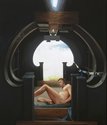
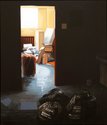
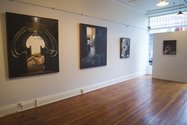

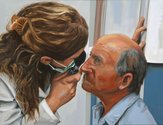
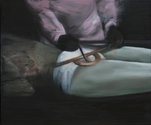
 Advertising in this column
Advertising in this column Two Rooms presents a program of residencies and projects
Two Rooms presents a program of residencies and projects
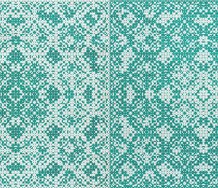
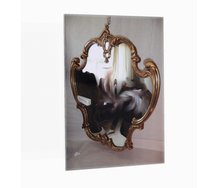
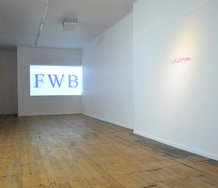
This Discussion has 0 comments.
Comment
Participate
Register to Participate.
Sign in
Sign in to an existing account.